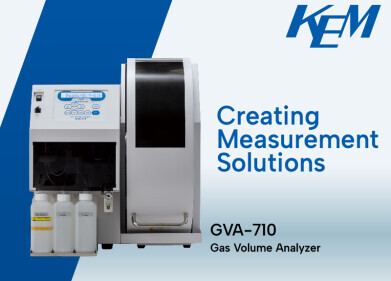Laboratory Products
Liquid Dispensing: 101
May 02 2021
From buffer solutions to cell culture media, liquid dispensing is one of the most common laboratory procedures. Samples are generally small and require specialist equipment that allows scientists to extract and dispense liquids on a microlitre scale.
Most laboratories use one of two liquid dispensing techniques - pipetting or dispensing. Pipetting uses a purpose-built tool to extract liquid, using either air displacement or electronic suction. Dispensing reverses the process and used specialised equipment to release liquid.
The type of liquid pipetting and dispensing instruments used depend on a variety of factors, with some of the most important explored below:
Physical properties
Liquids can generally be sorted into three categories – viscous, volatile and aqueous. Most are aqueous and can be easily handled using air displacement pipettes. These are driven by pistons which move in the cylinder and create an air vacuum that sucks up liquid. As air displacement pipettes are sensitive to organic solvents they’re more commonly used in biochemistry and biology laboratories, and less utilised for chemistry applications. When working with volatile or viscous liquids most scientists prefer to use positive displacement pipettes. These see the pipette tip come into direct contact with liquid, similar to a syringe.
Accuracy and precision
Results rely heavily on accuracy and precision, which means it’s important to choose the right liquid dispensing instrument for the job. As a general rule, pipettes should be as small as possible. This is because accuracy is compromised when volume is set to minimum capacity. Choosing the right pipette tip is also an important variable when maximising accuracy and precision.
Upgrading to electronic pipettes
As well as reducing the risk of repetitive strain injury in researchers, electronic pipettes can be a great way to improve efficiency. The piston is replaced with a battery-powered electric motor that’s activated with the push of a button, as opposed to thumb movement. Most electronic pipettes feature a variety of modes, including variable dispensing, reverse pipetting, programmed serial dilutions and other functions that improve and streamline laboratory operations.
Bottletop dispensers
For larger volumes of liquid bottletop dispensers can be a good solution. They attach to the top of a container and allow laboratory personnel to manually dispense liquid in a way that’s safe and accurate.
Want to know more about liquid dispensing in laboratories? Lukas Keller, a representative from industry leading pipetting and media preparation solutions manufacturer Integra Biosciences AG, explores the importance of selecting laboratory equipment in ‘Are you using the right micropipette?’
Digital Edition
Lab Asia 31.2 April 2024
April 2024
In This Edition Chromatography Articles - Approaches to troubleshooting an SPE method for the analysis of oligonucleotides (pt i) - High-precision liquid flow processes demand full fluidic c...
View all digital editions
Events
Apr 22 2024 Marrakech, Morroco
Making Pharmaceuticals Exhibition & Conference
Apr 23 2024 Coventry, UK
Apr 23 2024 Kintex, South Korea
Apr 23 2024 Seoul, South Korea
Apr 24 2024 Jakarta, Indonesia


.jpg)

.jpg)













